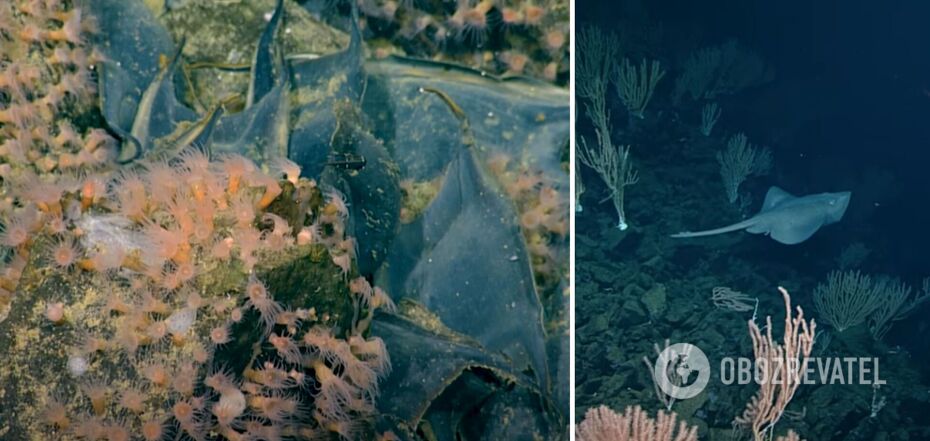News
Ancient volcano covered with a million giant eggs discovered at the bottom of the ocean
At the bottom of the Pacific Ocean near Canada, scientists have explored an ancient underwater volcano, discovering that it is still active. In addition, it was literally covered with thousands of giant eggs.
This is stated in a study reported by LiveScience. Prior to the expedition, it was believed that the volcano had long since gone extinct, and the waters around it had frozen.
However, as it turned out, the underwater volcano, which rises 1,100 meters above the seabed, is gushing with warm water and covered with deep-sea corals.
Scientists have found that the hot and mineral-rich liquid maintains the temperature of the surrounding waters, providing ideal conditions for the survival of some marine creatures in the deep sea. Among them was the Pacific white stingray (Bathyraja spinosissima), which laid its eggs on top of the volcano, which is located at a depth of almost 1.5 kilometers.
"It's a really special place on top of a really special place," said Cherise Du Preez, a deep-sea marine biologist with Fisheries and Oceans Canada and the expedition's principal investigator.
According to her, the only previously found Pacific stingray nursery was found in the Galapagos Islands, but "it had about a dozen or two dozen eggs."
While on the top of the volcano, Du Preez estimates that there may be as many as a million eggs.
"I would estimate that there were - I don't know - 100,000? A million?" said Du Preez, noting that the eggs were large - about 50 centimeters across.
The researchers were also the first in history to video a Pacific white stingray laying eggs.
Pacific stingrays are related to sharks and common rays. They are one of the deepest-sea stingray species, living at depths of 800 to 2900 meters off the west coast of North and Central America. Adult females can grow up to 2 meters in length and lay rectangular eggs, which are known as "mermaid pouches" for their resemblance to small handbags.
The researchers explain that it takes four years for the young to develop, and the warm volcanic water probably speeds up the egg gestation period. In addition, the top of the seamount is almost a coral garden, so it is a safe nursery.
Subscribe to OBOZREVATEL's Telegram, Viber, and Threads channels to keep up with the latest developments.



























